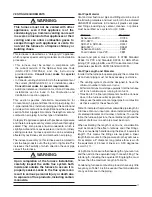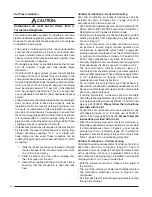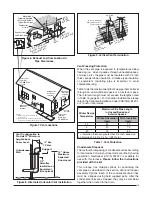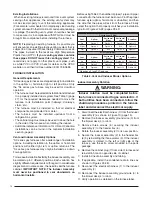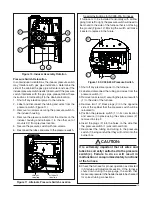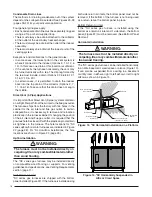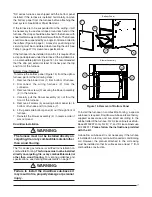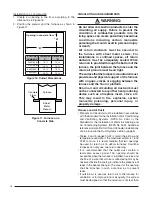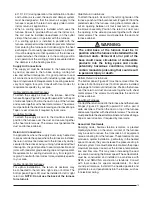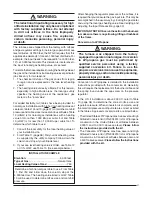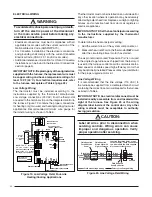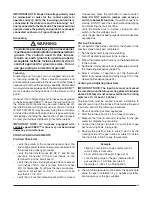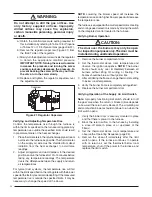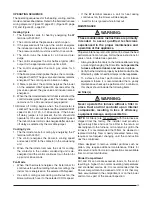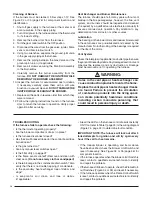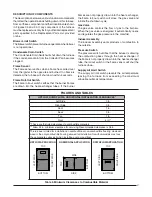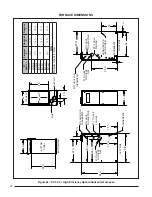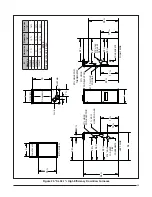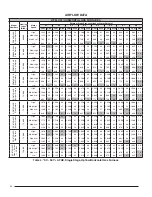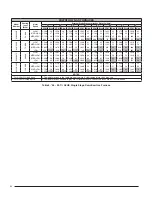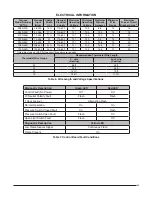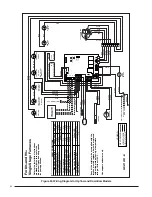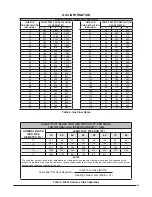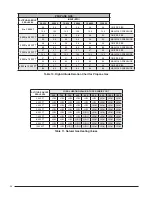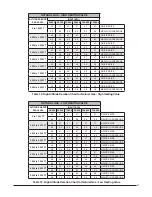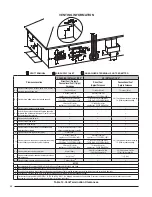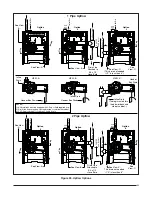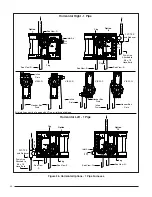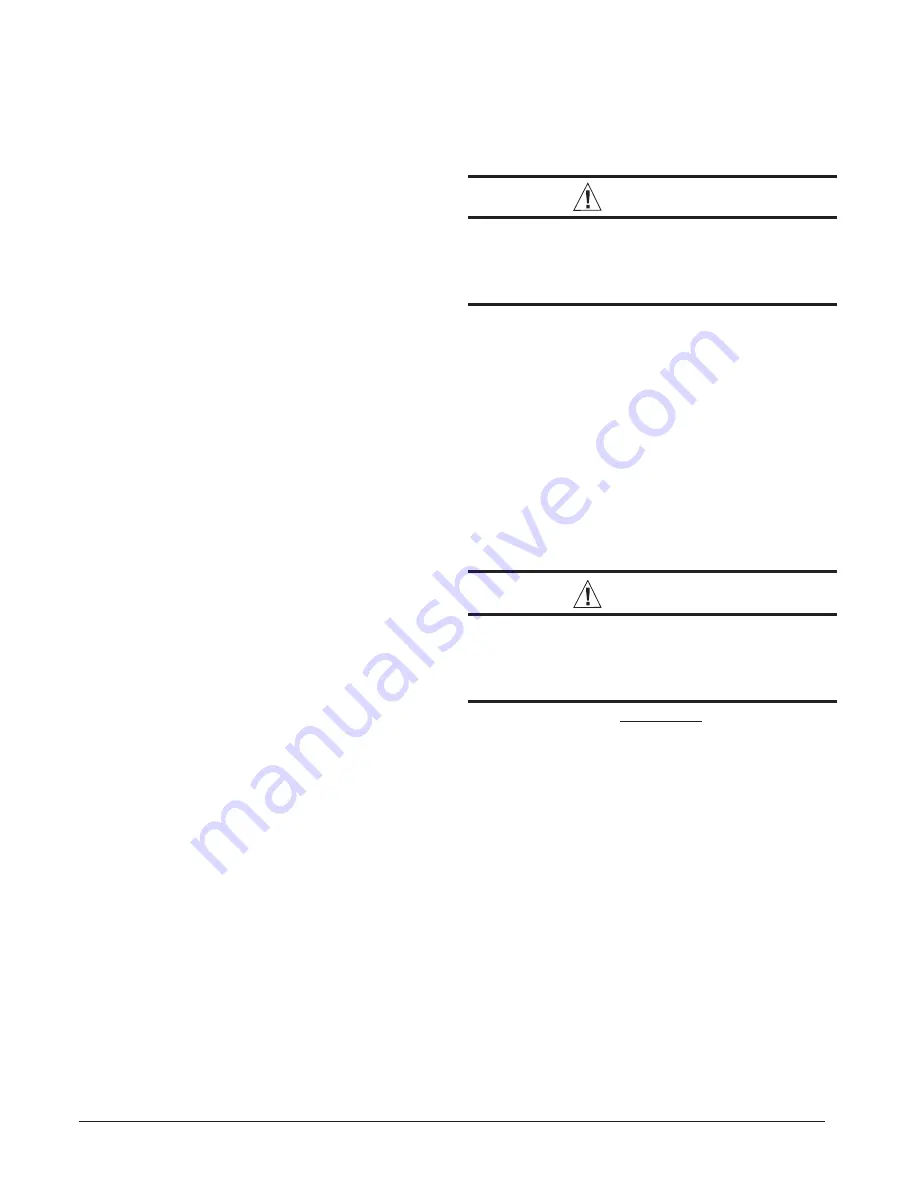
25
OPERATING SEQUENCE
The operating sequences for the heating, cooling, and fan
modes are described below. Refer to the fi eld and furnace
wiring diagrams: (Figure 19 page 22), (Figure 20, page
22) and (Figure 24, page 34).
Heating Cycle
1. The thermostat calls for heat by energizing the
W
terminal with 24VAC.
2. The control verifi es the pressure switch is open.
3. If the pressure switch is open, the control energizes
the inducer and waits for the pressure switch to close.
The pressure switch must close within 10 seconds.
4. The control runs the inducer for a 30 second pre-
purge.
5. The control energizes the Hot Surface Igniter (HSI)
output for the appropriate warm-up time limit.
6. The control energizes the main gas valve for 3
seconds.
7. If the fl ame proved and ignites the gas, the control de-
energizes the HSI. The gas valve and inducer remains
energized. The control goes to blower on delay.
8. If fl ame is present, the control energizes the blower
on the selected HEAT speed 30 seconds after the
gas valve opened. The gas valve and inducer remain
energized.
9. When the thermostat demand for heat is satisfi ed, the
control de-energizes the gas valve. The Inducer output
remains on for a 30 second post-purge period.
10. Blower off timing begins when the thermostat is
satisfi ed. The control will operate at the selected HEAT
speed of 60, 90, 120, or 180 seconds. If the blower
off delay jumper is not present, the fan should still
operate for 120 seconds at the selected HEAT speed.
The Indoor blower motor is de-energized after a blower
off delay as selected by the movable jumper.
Cooling Cycle
1. The thermostat calls for cooling by energizing the
Y
terminal with 24VAC.
2. The control energizes the blower in cooling speed
and sends 24VAC to the contactor in the condensing
unit
3. When the thermostat removes the call for cooling,
the contactor in the outdoor condensing unit is de-
energized and the control continues to run the fan for
a period of 60 seconds.
Fan Mode
• When the thermostat energizes the
G
terminal for
continuous fan (without calling for heat or cooling), the
indoor fan is energized on the selected FAN speed.
• If a call for cooling occurs during continuous fan, the
blower will switch over to the selected COOL speed.
• If
the
W
terminal receives a call for heat during
continuous fan, the blower will de energize.
•
A call for fan is ignored while in lockout.
MAINTENANCE
WARNING:
These maintenance instructions are primarily
intended to assist qualified technicians
experienced in the proper maintenance and
operation of this appliance.
Proper maintenance is most important to achieve the best
performance from a furnace. Follow these instructions for
years of safe, trouble free operation.
•
Always replace the doors on the furnace after servicing
or cleaning/changing the fi lters.
Do not operate the
furnace without all doors and covers in place.
• Verify the thermostat is properly installed and will not be
affected by drafts or heat from lamps or other appliances.
• To achieve the best performance and minimize
equipment failure it is recommended that a yearly
maintenance checkup be performed. At a minimum,
this check should include the following items:
Air Filter(s)
WARNING:
Never operate the furnace without a fi lter in
place. Dust and lint can build up on internal
components, resulting in loss of effi ciency,
equipment damage, and possible fi re.
NOTE:
Air fi lter(s) are not supplied with the furnace as
shipped from the factory. The installer must provide a
high velocity fi lter and rack for a fi lter in the return air
duct adjacent to the furnace, or in a return air grill to the
furnace. It is recommended that fi lters be cleaned or
replaced monthly. New or newly renovated homes may
require more frequent changing until the construction
dust has minimized.
Filters designed to remove smaller particles such as
pollen, may require additional maintenance. Filters for
side return and bottom return applications are available
from most local distributors.
Blower Compartment
Dirt and lint can create excessive loads on the motor
resulting in higher than normal operating temperatures
and shortened service life. It is recommended that the
blower compartment be cleaned of dirt or lint that may
have accumulated in the compartment or on the blower
and motor as part of the annual inspection.

